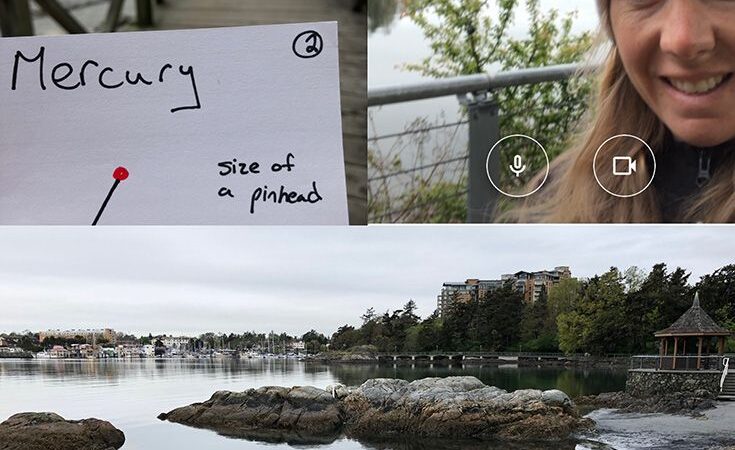With the start of their Science unit on Space, Grade 6 Science students had the chance this week to go on a virtual tour of the solar system when they walked around their neighbourhood, backyard, or house. Ms. Ana Vera and Ms. Shawna Parks took the students for a walk around their neighbourhoods as their classes attempted to recreate the distance between the planets.
Unlike diagrams of the Sun and planets in books, solar system models don’t adequately represent the vast distances between the planets. Even the largest models, such as at the ceiling-covered Hayden Planetarium in New York, or the Morehead Planetarium at Chapel-Hill, are both far too small.
Planet Walks aim to show that in reality, the planets are small, and the distance between them is always very large. The only way to really “see” the distance is to go outside. This activity is something Ms. Ver and Ms. Parks do with students every year, but due to the current COVID-19 restrictions, they had to incorporate some help from technology to allow the students to experience the walk together.
Students worked together in their online classroom to decide, based on the ball that represented the sun, what other household objects could provide reasonable scale models for the other planets. They then used Google Sheets to calculate how to scale down the actual distances between the planets to paces that matched the scale of their planet models.
For the walk, the planets were represented by these objects:
- Sun – a ball
- Mercury – a pinhead
- Venus – a peppercorn
- Earth – a peppercorn
- Mars – a pinhead
- Jupiter – a chestnut, pecan or larger bouncy ball
- Saturn – a hazelnut, acorn or a smaller bouncy ball
- Uranus – a peanut or coffee bean
- Neptune – a peanut or coffee bean
The Earth, which is nearly 13,000 km wide, was represented in the simulation by a peppercorn, which is 20 mm wide. The Sun is 1.3 million km wide and was represented by a ball that is 20 cm wide. This meant that in the Planet Walk model, 1 cm represented 65,000 km (or five Earths) and 1m represented 6,500,000 km (five Suns). For the walk, one pace was equal to 1 m and this made it necessary for students to go outside. These are the steps the students took while on their Planet Walk.
- The Sun to Mercury = 10 paces
- Mercury to Venus = 9 paces
- Venus to Earth = 7 paces
- Earth to Mars = 14 paces
- Mars to Jupiter = 95 paces
- Jupiter to Saturn = 112 paces
- Saturn to Uranus = 249 paces
- Uranus to Neptune = 281 paces
The Planet Walk was a great success and allowed these young science explorers to get outside and be active with their learning while getting a sense of the scope of our solar system.
